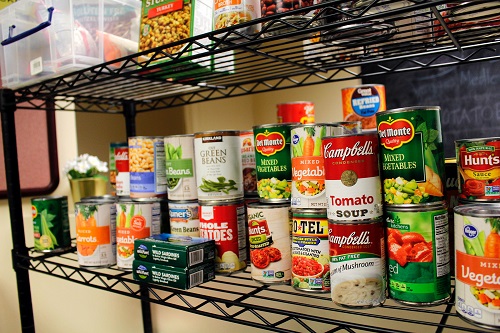September
Thirsty for a Strong Instructional Practice?
Responding to food insecurity and poverty in the college classroom.
September 6, 2018
 Digging coins out of the couch, stuffing their pockets with extra food at the end-of-the-semester potluck, eating countless ramen and canned pasta dinners — these misadventures are synonymous with the struggles of college life. Mainstream culture views this financial struggle as a rite of passage for college-bound people transitioning from adolescence to adulthood, sometimes becoming stuck in the murky realm between.
Digging coins out of the couch, stuffing their pockets with extra food at the end-of-the-semester potluck, eating countless ramen and canned pasta dinners — these misadventures are synonymous with the struggles of college life. Mainstream culture views this financial struggle as a rite of passage for college-bound people transitioning from adolescence to adulthood, sometimes becoming stuck in the murky realm between.
For an increasing number of college students, however, being poor is more than just an inconvenience or one of the character-building experiences of college life. Research suggests that over a quarter of all college students are food-insecure.
The U.S. Department of Agriculture defines food insecurity as “limited or uncertain availability of nutritionally adequate and safe foods or limited or uncertain ability to acquire acceptable foods in socially acceptable ways.”
Often when having to choose between food and shelter or educational expenses, students choose educational expenses in the hope of creating a better life for themselves. Between 30 percent and 40 percent of undergraduate students are food-insecure, and a similar number lack a secure place to live. In 2013, for example, more than 50,000 college students self-reported as homeless on their FAFSA applications. This problem is even more pronounced for historically underserved students, including students of color, first-generation students and low-income students.
Economic distress is the No. 1 reason low-income students fail to finish college. Low-income students who scored between 1200 and 1600 on their SATs are half as likely to graduate as their peers from higher-income families. Even though a far greater percentage of college students qualify for financial aid than in the past, colleges and states have fewer dollars per student to allocate. The cost of higher education is at an all-time high, while the income and wealth of most American families is declining.
Take a SIP of this: Food Insecurity and Poverty in the College Classroom
Many students who struggle with food insecurity or other financial hardships may be reluctant to seek assistance because of the stigma of poverty. Faculty should think about ways to reduce stigma and avoid singling out individuals when communicating with students around these issues. For example, faculty can include a basic-needs statement about food resources and other services that could assist students who are struggling (for more information, see the link below to “basic-needs security and the syllabus”). Faculty could also create a page in Blackboard listing important student resources offered on campus. Students may be unaware of what kind of support services Metropolitan State University of Denver offers or that there are various options depending on their specific needs.
Another way to support students struggling financially is to consider the cost of required books and materials. Because of the high cost of textbooks, consider using “open textbooks,” or openly licensed sources that can be found for free online. The Center for Teaching, Learning and Design will be hosting a Faculty Learning Community on Open Educational Resources this fall.
Other MSU Denver resources for students in need:
The MSU Denver Roadrunner Food Pantry assists students struggling with food insecurity and receives donations from individuals and groups.
The CARE Team (Consultation, Assessment, Referral and Education) focuses on student safety and well-being.
Still Thirsty? Take another SIP of Food Insecurity and Poverty in the College Classroom:
- Why college professors are offering to help students get food and shelter.
- Basic-needs security and the syllabus.
- What colleges can do right now to help low-income students succeed.
Visit The Well for more great ideas and resources for Strong Instructional Practices in your higher education classroom.
